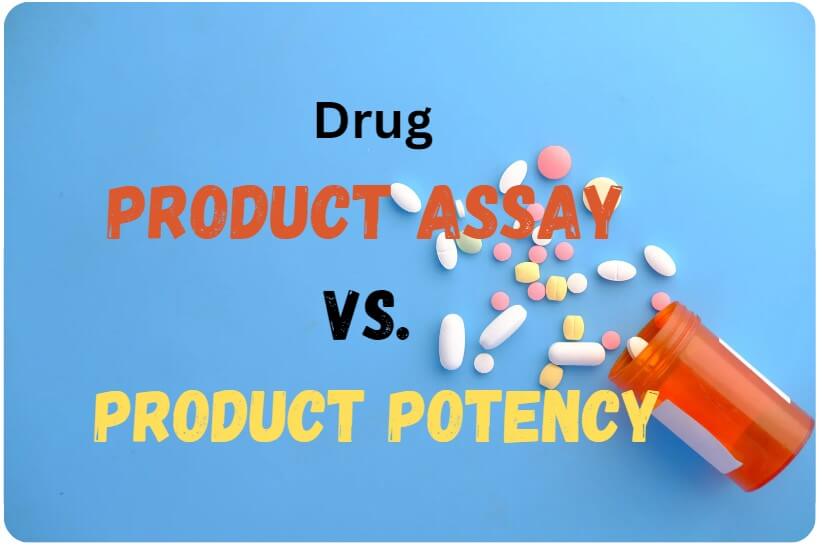In this discussion, we will delve into two very important terms associated with drug products: drug product assay and drug product potency. The aim is to clear vision on their interrelation, differences, and significance, as guided by the ICH guideline Q2 R2, which focuses on analytical method validation.

Drug Product Assay
Definition and Purpose
A drug product assay serves to determine the quantity or concentration of the active pharmaceutical ingredient (API) within the drug product. Whether expressed as a quantity (e.g., 20 mg per tablet) or concentration (e.g., 5 mg per 5 ml), the assay value is essential for understanding the drug’s composition.
Analytical Techniques
Quantitative analytical techniques such as high-performance liquid chromatography (HPLC), gas chromatography, and UV spectroscopy are used to accurately measure the API’s amount in the drug product.
Labeled Specification
The assay ensures that the drug contains the correct amount of API, complying with the labeled specifications. For example, a drug product’s assay may need to fall between 95% to 105% of the specified quantity for each batch.
Related: Method Validation of Analytical Procedures
Calculating Assay
Let’s take an example: If a drug substance is 19 mg instead of the labeled 20 mg, the assay would be 95%. This calculation is important for maintaining the product’s quality and efficacy.
Drug Product Potency
Definition and Purpose
Contrary to the assay, drug product potency measures the drug’s ability to produce a desired therapeutic effect at a specific dose. It focuses on the biological activity or efficacy of the drug, rather than its chemical concentration.
Methodology
Potency is often determined through biological assays, such as in vitro or in vivo models, evaluating the drug’s effectiveness in producing a therapeutic response.
Examples of Potency Assessment
- Monoclonal Antibodies (mAbs):
- Assessment: ADCC (Antibody-Dependent Cell Cytotoxicity) or CDC (Complement-Dependent Cytotoxicity).
- Example: Potency of an anti-cancer mAb evaluated based on its ability to kill cancer cells in vitro.
- Vaccines:
- Assessment: Ability to stimulate an immune response.
- Example: The potency of flu vaccines is determined by their ability to generate specific antibodies.
- Hormone Therapies:
- Assessment: Based on the biological activity of the hormone.
- Example: The potency of insulin is determined by its ability to reduce blood sugar levels.
Significance of Potency Testing
Potency testing is required for biological drugs like vaccines and antibodies, where the biological activity cannot be only determined by chemical assays. It ensures that the drug’s effectiveness aligns with the intended therapeutic effect.
Conclusion
In summary, it is important to understand the difference between drug product assay and drug product potency to ensure effective and high-quality pharmaceutical products. An assay measures the amount of active ingredient in a drug, while potency assesses the biological effectiveness of the drug. This evaluation is especially critical for biological drugs.

